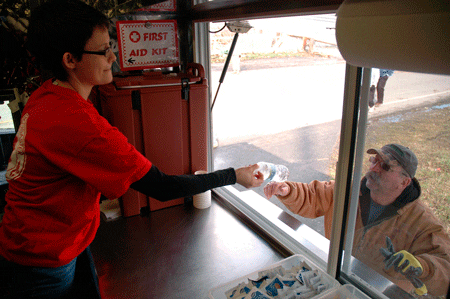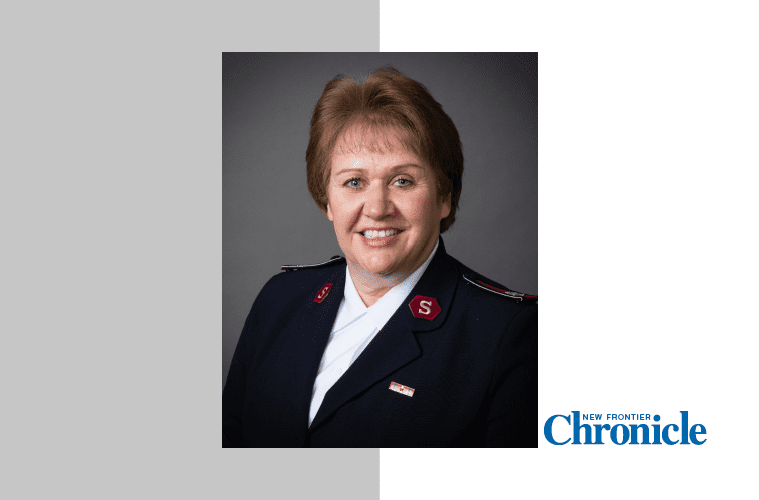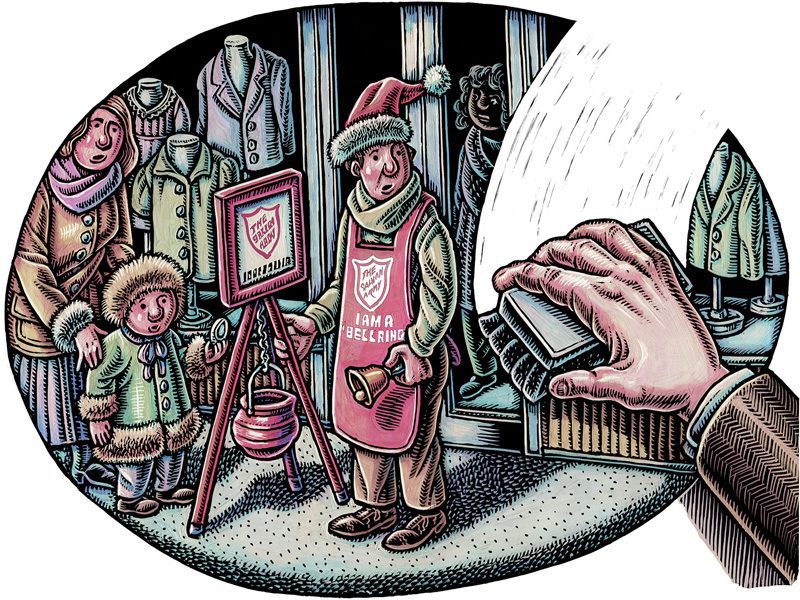Salvation Army continues long-term recovery one-year after deadly tornadoes
The Salvation Army continues to provide long-term emergency relief services to the residents whose lives were forever changed following a series of devastating tornadoes that ravaged parts of the southern U.S. in April 2011. The Salvation Army Emergency Disaster Response (EDS) teams immediately responded to the storms and provided 4.8 million meals, snacks and drinks, as well as material, emotional and spiritual care to survivors throughout all impacted states—Alabama, Arkansas, Georgia, Kentucky, Louisiana, Mississippi, Oklahoma, Tennessee and the Carolinas.
“These were a series of storms that not only changed lives one year ago, but changed lives forever and The Salvation Army will be in these communities to make these changes easier,” said Major George Hood, national community relations and development secretary for The Salvation Army. “From day one, The Salvation Army has been and will continue to be committed to the long-term recovery efforts by addressing the on-the-ground needs of families impacted throughout the south.”
Within minutes of the storms making landfall last year, The Salvation Army deployed multiple mobile feeding units throughout the southern states, providing warm meals, snacks and drinks, along with emotional support and basic materials to thousands of individuals. As the disaster operation transitioned from immediate response into long-term recovery, The Salvation Army is still on-site in many of these communities, providing continued support to those in need. Long-term recovery plans in support of communities and survivors of the April 2011 tornadoes in the southern United States include:
 ALM Division (Serving Alabama, Louisiana & Mississippi)
ALM Division (Serving Alabama, Louisiana & Mississippi)
As rebuilding continues across Alabama and Mississippi, The Salvation Army, in partnership with Long Term Recovery Committees in 13 communities, is working to connect applicants to available assistance through the various agencies in specific service areas. These include community capacity, disaster social services and distribution centers.
On May 3, 2012 FedEx, The Salvation Army and NASCAR driver, Denny Hamlin, are partnering to bring awareness to the importance of ongoing recovery efforts, specifically in Tuscaloosa, Ala. Together, the two organizations and Hamlin will welcome a local family into a new home, which was built after the family’s original home was destroyed last spring. The home is the first to be rebuilt in the Alberta city neighborhood of Tuscaloosa.
The Salvation Army and FedEx previously partnered on rebuilding communities in New Orleans, where the Army established the EnviRenew initiative that built environmentally friendly homes for Hurricane Katrina survivors.
GEO Division (Serving Georgia)
The Salvation Army of Georgia immediately responded by serving nine counties, including Spalding, Lamar, Troup, LaGrange, Floyd, Bartow, Meriwether, Troup, and Rabun. The Army implemented a long-term recovery plan for these impacted areas, funded by $1 million received in donations, that includes assistance with building materials, appliances, household items, furniture, short-term case management for resettlement assistance and the hiring of three social workers.
In addition, The Salvation Army is helping rebuild Spalding County’s historic 107 year-old Vaughn United Methodist Church, which was destroyed by the tornadoes. The Salvation Army is supporting the efforts of rebuilding the church by providing furnishing materials.
KTN Division (Serving Kentucky, Tennessee and Northwest Georgia)
As part of the one-year anniversary of the tornadoes, The Salvation Army of KTN will take part in memorial services and volunteer celebrations, recognizing the lives lost and the efforts of those working to rebuild lives throughout the area.
The Salvation Army of Chattanooga began serving storm survivors immediately after the first tornadoes swept through Bradley County the afternoon of April 27, and began service in Catoosa County later that evening. On April 28, disaster recovery response widened to include more of Bradley and Hamilton counties in Tennessee and Catoosa, Walker and Dade counties in Georgia.
The Greater Chattanooga Area Command served in all disaster response centers weeks after the storm and hired additional caseworkers to better serve the needs of storm survivors in the long-term recovery efforts in each of these counties. The Army also provided warm meals and drinks, as well as emotional and spiritual care in Murfreesboro, Tenn., and Danville, Ky.
 AOK Division (Serving Arkansas & Oklahoma)
AOK Division (Serving Arkansas & Oklahoma)
In Arkansas, The Salvation Army provided immediate emergency assistance to tornado survivors in the communities of Vilonia, Hot Springs Village, and Fountain Lake. The Army also worked with Oklahoma Emergency Management to facilitate services of food and drinks to Stillwell, Okla. Currently, The Salvation Army is working to meet the long-term recovery needs of disaster-affected households within these communities for as long as they are needed.
“Long-term recovery is a difficult path. The process of rebuilding homes and lives takes time and patience,” Hood said. “The Salvation Army will work with local governments, organizations and community members to make sure every individual and family will have a new place to call home.”











